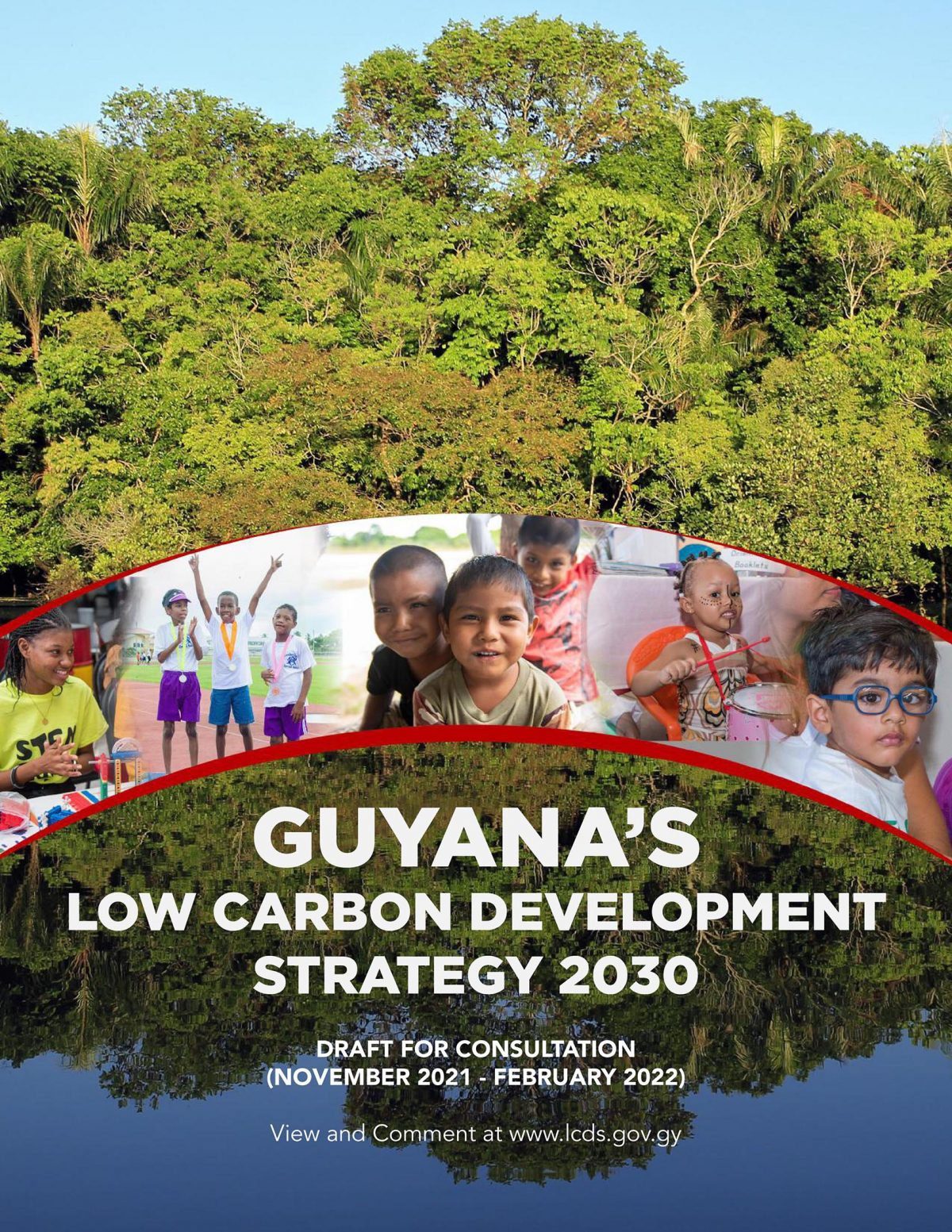A draft of the more ambitious version of the PPP/C government’s flagship Low Carbon Development Strategy (LCDS) dubbed LCDS 2030 was unveiled on Thursday by Guyana’s President, Dr. Irfaan Ali.
LCDS 2030 will be aimed at creating a new -low-carbon economy in Guyana by establishing incentives that value the world’s ecosystem services and promotes these as an essential component of a new model of global development.
At the launch, President Ali explained that though the draft LCDS 2030 differs vastly from what was initially proposed 12 years ago, the vision fundamentally remains centred on two questions: how can Guyana harness the opportunities of low carbon development to prosper at home? and how can Guyana lead the way to globally relevant solutions to the biggest challenges of our time, including energy security and climate change?
Against that backdrop, the Head of State explained that the new vision addresses four thematic areas, chief among which is how Guyana can align its status as an oil and gas producer with being an active participant in the global search for climate solutions.
“The discovery of oil and gas has rapidly integrated Guyana into a three to four trillion US-dollar annual global marketplace,” President Ali stated.
“However, the global market for oil and gas will not last forever and will decline in the coming decades as the world decarbonizes in line with the targets of the Paris Climate Agreement and the need to stabilize global temperature increases at 1.5 degrees above pre-industrial levels,” he said.
To ensure that Guyana will be ready for this future world, President Ali pointed out that the South American country will be transitioning on a domestic and international scale.
Guyana’s domestic transition, the President stated is centered on remaining one of the world’s lowest carbon economies – prioritising action on forest and energy. The country’s rainforests store over 5.41 gigatonnes (billions of tonnes) making them a critical conservation area to mitigate global climate change.
On the global transition, the Head of State outlined that Guyana would pursue strong policies to ensure that its oil and gas sector operates to international standards.
Already, the country has been making strides in this regard. This year alone, Guyana has introduced a US$45 carbon tax. This is also buttressed by new measures that have been introduced to ensure waste management is handled by oil producers, in accordance with “cradle to grave” international standards.
“My government will also continue dialogue with oil producers to ensure that, alongside the above measures, exploration and production operations will continue to explore all opportunities for lower carbon technological innovation – including the use of renewable energy in oil production, Carbon Capture Utilisation and Storage (CCUS) and – when technologically viable – green hydrogen,” the Head of State outlined further.
President Ali assured that the government is working towards maximizing the benefits to be accrued from the oil and gas industry while at the same time advocating for global policies to create a level playing field to align the global marketplace for oil and gas with the goals of the Paris Climate Agreement.



